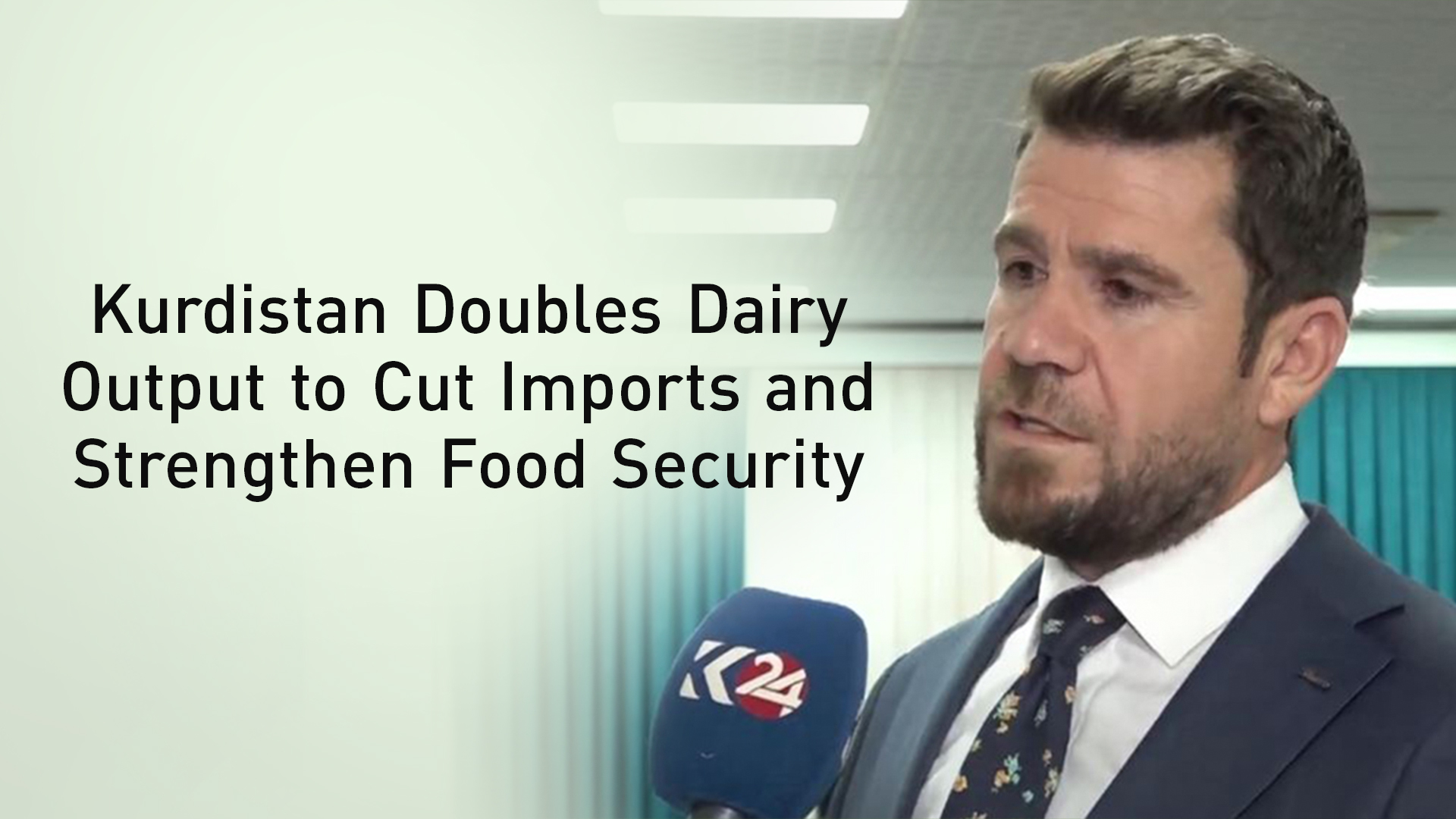Kurdistan Doubles Dairy Output to Cut Imports and Strengthen Food Security
KRG Director of Livestock Resources told Kurdistan24 that the region could fully meet domestic demand within four years if the newly licensed projects enter production, bringing total output closer to the required 500,000 tons.

ERBIL (Kurdistan24) — The Kurdistan Regional Government’s (KRG) ninth cabinet has significantly expanded milk production projects across the Region, with current annual output reaching 285,000 tons, though the domestic market requires 500,000 tons, according to agriculture officials.
On Wednesday, Firas Sadiq, Director of Livestock Resources at the KRG Ministry of Agriculture, told Kurdistan24 that six years ago, there were only 73 licensed dairy farm projects producing milk, with a total of 8,000 cows. That number has since risen to 93 projects, with 16,000 dairy cows currently in production—representing a 100 percent increase.
Sadiq explained that these projects are spread across all areas of the Kurdistan Region and have been launched during the tenure of the ninth cabinet. “The milk we now obtain from farms and villages amounts to 285,000 tons annually,” he said, adding that projections indicate the Kurdistan Region could fully meet domestic demand within four years if the newly licensed projects enter production, bringing total output closer to the required 500,000 tons.
The livestock director highlighted that one of the Region’s greatest strengths lies in its self-sufficiency potential. “Citizens are increasingly seeking local natural products with high quality, because the best product is the one produced locally,” he noted.
He further emphasized that the ninth cabinet has attached great importance to the agricultural sector, a priority expected to continue under the upcoming tenth cabinet.
In addition, Sadiq pointed out that the current KRG administration has exempted domestic production materials from customs duties, allowing dairy farmers to import necessary equipment tax-free for establishing barns and factories.
The expansion of milk production projects is part of a broader KRG policy aimed at diversifying the economy and reducing reliance on oil revenues. The KRG has introduced initiatives to strengthen nonoil sectors such as agriculture, livestock, tourism, and small-to-medium industries. These programs are designed not only to meet domestic needs but also to create new opportunities for export and investment.
In agriculture and food industries, the KRG has supported projects that make use of locally produced raw materials. Farmers have been encouraged to supply products such as fruits, vegetables, grains, and dairy for processing in local factories, which in turn produce canned food and packaged goods for Kurdistan’s markets. This strategy helps reduce imports, generate local jobs, and support rural economies.
Similarly, the livestock sector has been prioritized as part of the Region’s food security strategy. By expanding dairy farms and meat production projects, the government aims to ensure stable supplies of essential goods while protecting consumers from price fluctuations linked to imports.
Tourism is another pillar of the nonoil diversification policy. The KRG has invested in infrastructure to attract visitors to the Region’s mountains, historic sites, and cultural attractions, creating a parallel source of revenue and employment outside the energy sector.
Together, these initiatives reflect the government’s long-term vision to build a sustainable and balanced economy, where locally produced goods and services play a central role in meeting the population’s needs and boosting economic independence.
